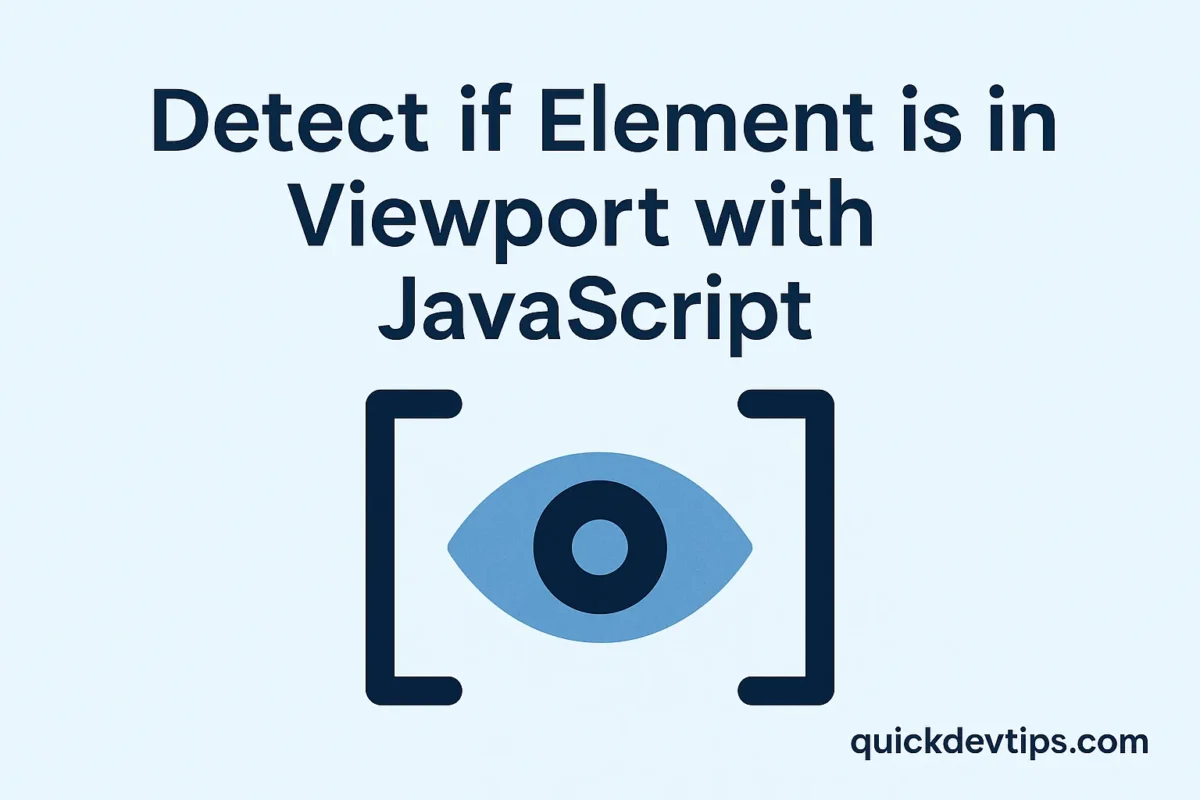Introduction
Detect if Element is in Viewport with JavaScript is a common requirement in web development. Whether you want to lazy-load images, trigger animations, or track scroll-based events, knowing if an element is visible to the user is essential. In this snippet, we’ll show you how to do this in a modern, efficient way.
How to Detect if Element is in Viewport with JavaScript
Here’s a short example using IntersectionObserver API. This method is cleaner, faster, and more reliable than manually calculating scroll positions or bounding boxes.
const observer = new IntersectionObserver(entries => {
entries.forEach(entry => {
if (entry.isIntersecting) {
console.log(‘Element is in the viewport!’);
}
});
});
const target = document.querySelector(‘#myElement’);
observer.observe(target);
How This Works
The Detect if Element is in Viewport with JavaScript example above uses the IntersectionObserver API. This allows you to efficiently observe visibility changes of DOM elements as they enter or exit the viewport without needing scroll events or manual math.
Why Use This?
Using Detect if Element is in Viewport with JavaScript helps you create better performing and smoother user experiences. IntersectionObserver is now widely supported and recommended for performance-conscious websites.
Common Mistake
Some developers forget to properly unobserve elements after they’ve served their purpose. This can lead to unnecessary performance overhead if your app observes hundreds of elements indefinitely.
Pro Tip
Combine this with animations or lazy-loading strategies to improve both UX and performance, especially on content-heavy pages.

1 thought on “Detect if Element is in Viewport with JavaScript — Simple IntersectionObserver Example”